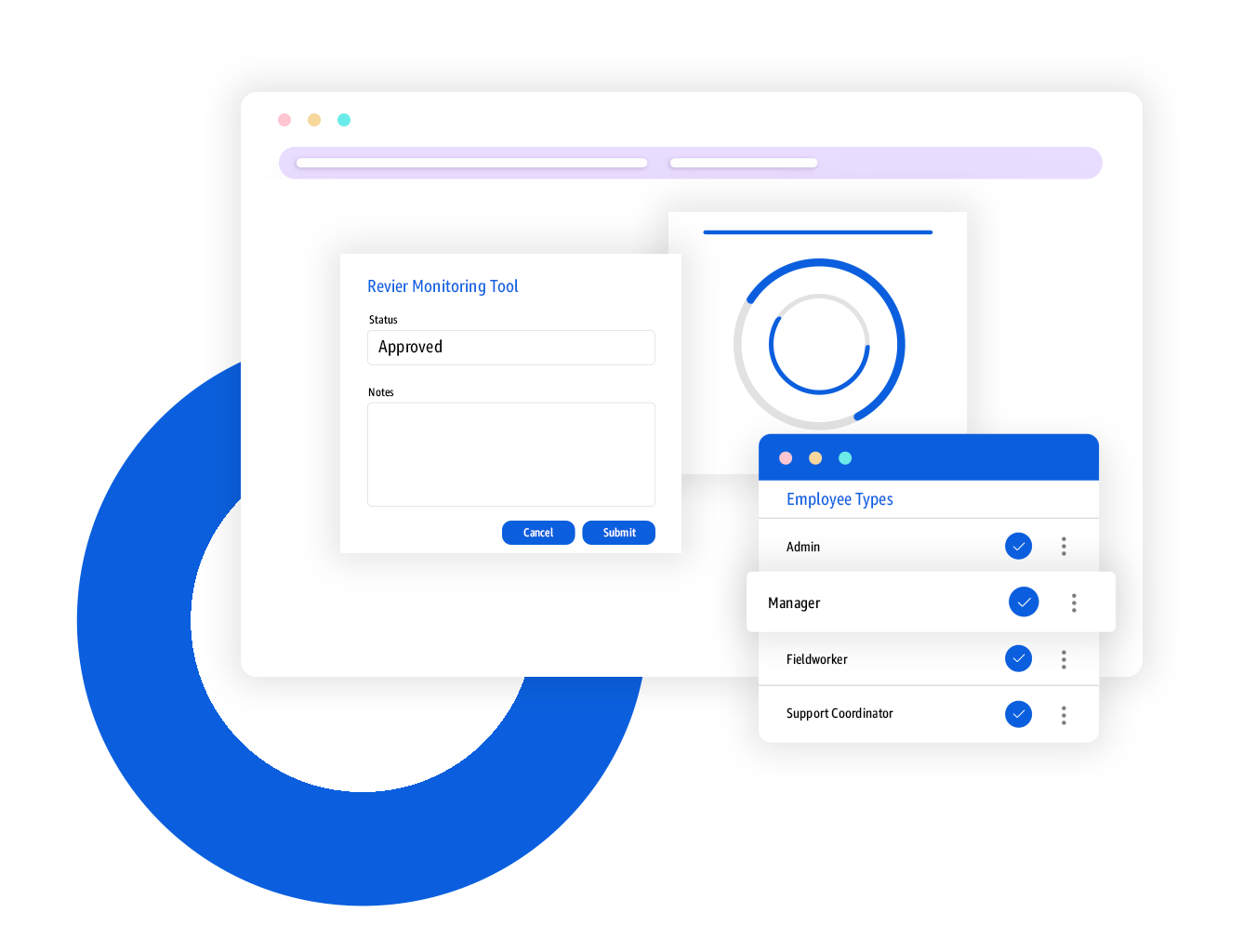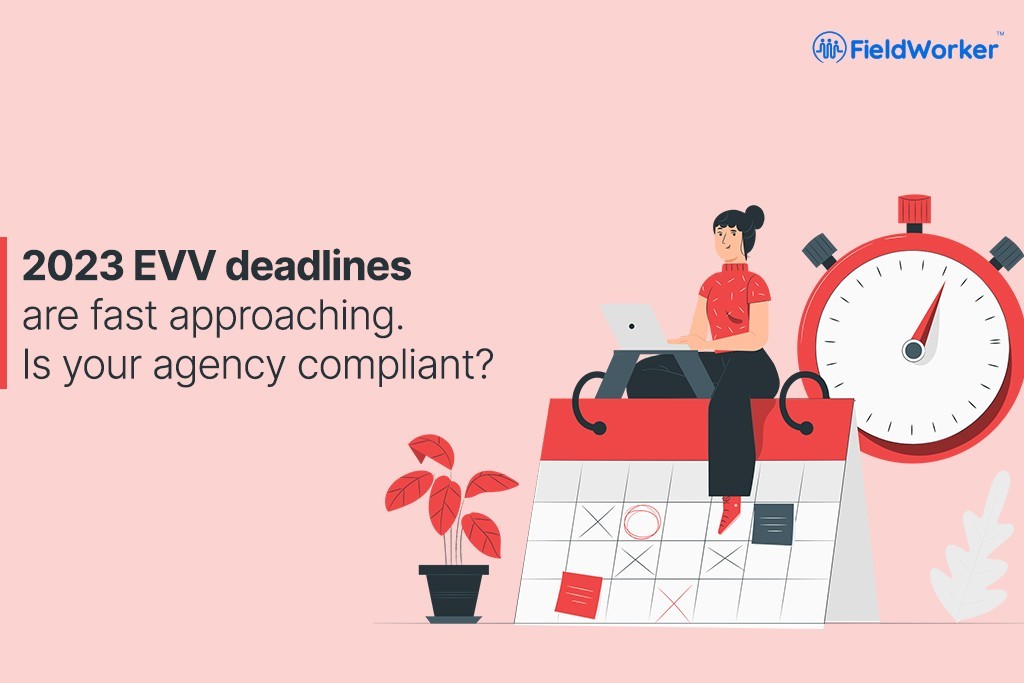Introduction
The 21st Century Cures Act mandates Electronic Visit Verification (EVV) for home healthcare providers. Before January 1st, 2020, all states were obligated to install EVV. During the Covid-19 pandemic, a majority of states that were implementing EVV struggled to adhere to the deadlines as they were combating the outbreak. However, these states were granted an exception under the “Good Faith Efforts Request” clause.
Now, by January 1st, 2023, all US states must adhere to and implement electronic visit verification for home healthcare providers.
The Centers for Medicare & Medicaid Services have not provided any updates regarding the deadline extension. States must therefore expedite the implementation process to launch their systems before the deadline.
What is EVV, and why is it required?
Under Medicaid, the state’s home healthcare service agencies have a mandate to put an electronic visit verification system for their services.
Two critical issues brought about this requirement in the home healthcare sector.
- The level of care
Electronic visit verification’s primary goal is to ensure that patients receive the level of care that has been promised. Patients not getting the care they require is a significant issue right now. With EVV, healthcare providers will be held more accountable for giving patients the same care they are being charged for.
- Fraudulence
Although the home healthcare sector is expanding quickly and profitably, it is also very dishonest. According to a reasonable estimate by the National Health Care Anti-Fraud Association, health care fraud costs the country roughly $68 billion annually. The Electronic Visit Verification system will reduce false claims for medical services. Since EVV captures the below data:
- Date of Service
- Location of Service
- Type of Service
- Individual receiving service
- Individual rendering assistance
- Start/end time of service
The Centers for Medicare and Medicaid Services (CMS) will automatically collect this data to lower the possibility of erroneous billing or fraudulent claims.
Home healthcare providers must know how electronic visit verification will affect their organizations as the deadline draws closer.
Advantages of implementing electronic visit verification
Benefits:
Improved management
Using mobile apps with GPS check-ins, electronic visit verification software typically gives management a digital record of where each caregiver is or has been. Managers will also be able to monitor the completion of tasks and reports using electronic visit verification software. Additionally, this is crucial; managers can securely communicate with caregivers on the go using the mobile app. Any other way of communication may hinder the privacy rights of patients.
More adherence
As already discussed, the visit start and end times are recorded for electronic visit verification. This will stop caregivers from submitting fake timesheets or requesting payment for visits they never made. Caregivers are much less likely to skip a visit when they know it is being recorded. The decreased time theft and absenteeism will boost revenue. Timesheet or time card theft can cost you as much as 7% of your overall salary, even though not all managers know.
Compliance
Of course, ensuring compliance with regulations is the primary advantage of using EVV. If this mandate applies to you, you already participate in federal healthcare programs like Medicaid or Medicare. Your company won’t comply with the law without electronic visit verification. This would prevent you from participating in those initiatives and increase the likelihood that your facility would be closed.
The big questions
- How do you begin EVV compliance?
- How to choose the best EVV provider?
Here is the guide which will help you with EVV compliance:
1. Examine State Regulations
Remember that each state has its own set of regulations for implementing EVV, so you should start by looking up those in your state. According to the federal EVV mandate, the state is required to implement EVV systems by establishing a specific set of rules that must be followed to comply.
2. Find and choose a vendor
Your initial decision should be whether to use the State EVV Solution or a third-party EVV solution. You may additionally need to finish any required training before the implementation. The next step is conducting research and finding EVV software that can meet compliance requirements while streamlining your company’s processes. The ideal solution would provide compliance, manage payrolls, reduce operating expenses, and save time and effort.
3. Verify the Required Certificates and Licenses
To comply with federal and state standards, agencies must have certifications like the CMS certification. If an agency does not have CMS certification, it would not be able to receive reimbursement for care services provided under Medicaid.
4. What are the essential skills of a caregiver?
To guarantee that people only provide care services with the necessary skills and competencies and that services are carried out safely and effectively, the Senior and Disabilities Services (SDS) has put several standards into place.
5. Awareness
One must explain to the clients and their families how they can use technology to improve home care. Everything is now straightforward and quick, whether clocking in/out or checking the caregiver’s current position. An agency’s main advantage in educating clients is that they readily assist the agency in integrating and implementing the technology.
The fact that the deadline is drawing near makes it essential to adopt EVV as soon as possible. No Medicaid claims will be considered if the organization doesn’t follow the federal and state EVV regulations.
6. Adherence:
EVV vendors must adhere to The Health Insurance Portability & Accountability Act (HIPAA), the Americans with Disabilities Act, and other CMS policies, ensuring that an agency may submit a Medicaid claim for its services by sharing electronically stored data.
To prevent Medicaid denials, one must make sure they conduct thorough research, analyze a vendor, and deploy EVV before the deadline. In addition, making an agency compliant with the state may take some time, demonstrating the need to introduce EVV quickly and perform the appropriate steps.
How to prepare for EVV?
Education
It is crucial to ensure that your staff is informed of the anticipated changes as the deadline draws closer. Inform them of the changes that will be made to their current process and the reasons behind them. There is typically less opposition when employees are aware of and comprehend changes that are taking place.
Additionally, you’ll need to train staff members on the new program they will utilize for electronic visit verification. Software that is simple to use is generally what you desire. Regardless of the software’s usability, creating new processes and ensuring employees are aware of their new workflows are crucial for a successful adaptation.
Software
There are several factors to consider when selecting software to handle your demands for electronic visit verification.
Does it work with current systems?
You most likely use software or systems that have been in use for many years as a home healthcare provider. You probably don’t want to interfere with that routine, whether it involves your patient management system, payroll program, or billing system. It’s critical to select electronic visit verification software that connects with and functions well with these current systems to guarantee that business may continue as usual. Do ask the suppliers about their integration capabilities when speaking with them.
Is it user-friendly?
Customers frequently ignore usability when looking for software in general. The idea that the program should be simple to use is frequently overlooked in favor of the concentration on features and technology. The program should be straightforward to use, easy to understand, and rationale for the workflow. It is unproductive to select software that necessitates lengthy training and needs caregivers to spend more time on data entry, etc.
Conclusion
Delaying serves no purpose because most organizations across several states have already implemented EVV and are already in compliance with their state to receive Medicaid benefits.

